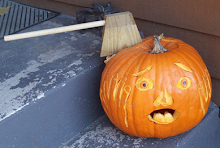I have collected some unusual tools in my home workshop. Of course I have many of the usual saws, planes, hammers, wrenches, and other hand tools, electric drills, sanders, table saws, and other power tools that are in many home shops. There is the ever present duct tape, WD40, sand paper, oil cans, and grease guns. I have also found that I have accumulated some other items that are indispensable at times. Here is a partial list of some of the more unusual items in my shop:
Toothbrush. It is great for cleaning things that are hard to reach into with fingers.
Stethoscope. When you have a piece of machinery or a car engine making that strange noise, and you can't seem to locate the source, place the receiving end of the stethoscope on the bearing, cover, etc., where it may be originating and soon you will locate its source.
Lipstick. Yes lipstick. Don't take a new tube of lipstick that your wife just purchased, but there should be a few old sticks that she may be willing to part with. Usually the darker the better, although for a few applications, a light color may work best. Work for what? Tool and die makers often have this stuff in their tool boxes called toolmakers bluing. It is a dark blue past that they spread thinly onto the surface of one part. Then they place a mating part onto or into the first part. Any high spots show up where the bluing transfers and can be removed or smoothed out. In the same way, lipstick works great when fitting pieces of wood or metal together to see what is interfering and which areas need to be chiseled or sanded down. Apply the lipstick only to one part and try fitting them together. The lipstick will transfer at the high spots, which can then be removed. When the transfer is even across the entire surface, you have a good fit.
Never Seize. This is silver stuff that comes in a gray bottle. Spread some on the threads of a bolt or metal shaft before putting it together and the metal doesn't seize up or rust together. It's great for exhaust systems, automotive bolts, and anything else that may have to come apart in the future.
Coat Hangers. This stiff wire comes in handy for many things, not the least of which is hanging up your shop coat. It can be used to hold parts together while working on them or reaching inside something to clean it. A few should be kept in the car for emergency repairs on the road.
Wires of Different Sizes. Sometimes finer wires are needed to reach into smaller areas or hold small pieces pieces together temporarily or permanently. They can be used at times to take the place of small screws.
PB Blaster. It is the best stuff I have found for loosening rusted bolts. Often times it takes only one application. On really rusted bolts, it may take several applications over a few days. Of course, you can always use Coca Cola in a pinch. Apply it to the rusted bolt and let it sit a couple of hours. Repeat a few times as needed.
Clothes Pins. The spring operated wooden clothes pins often make great little clamps for holding small or thin items while gluing. If you separate the clothes pin halves, you can glue sandpaper to the flat surfaces to make little sanding blocks that reach into smaller spaces.
Magnifying Glass. Maybe not everyone will need one, but as I get older the more I find some magnification comes in handy.
Tackle Box Trays and Grease Pencils. Fishing tackle box trays with covers, the ones that are clear or translucent and come out of the tackle box work best. If they have movable compartments, that is even better. When working on a project that requires disassembly of lots of small parts, place the parts in the compartments of the tray. Label each compartment with the contents using the grease pencil. (Dry erase markers also work, but sometimes they wipe off too easily.) This way you won't have a pile of very similar looking little screws that are nearly interchangeable. One compartment will say something like, "Top Carbuerator Screws," or "Intake Manifold Bolts." It will make it easier to put things together where they belong the first time.
Digital Camera. This you may not want to actually keep in your toolbox, but with the price of some lower cost digital cameras these days, it may not be a bad idea. When you open the hood on the car, or before you start ripping apart the rototiller, take a digital picture of what you will be working on. Heck, take a couple. With the price of digital film being so low, it doesn't hurt to take a bunch. Then as you start removing layer upon layer of screws, hoses, wires, and other components, keep taking more pictures. When you are putting it back together again and you can't remember if the bracket goes on with the flange in or out, take a look at the pictures in your camera. Assuming it was correct before you took it apart, you will know how it fits. You could always print out a few pictures for reference while you are working if you don't want to fumble with the camera with your greasy hands.
As I think of more unusual tools and other items for the workshop, I will add them to this list. Anyone else that has any additions, please feel free to add them with your comments.
Thursday, July 2, 2009
Unusual Home Workshop Tools
Labels:
auto repair,
automotive,
home repair,
tool,
woodworking,
work shop,
workshop
Subscribe to:
Post Comments (Atom)

No comments:
Post a Comment